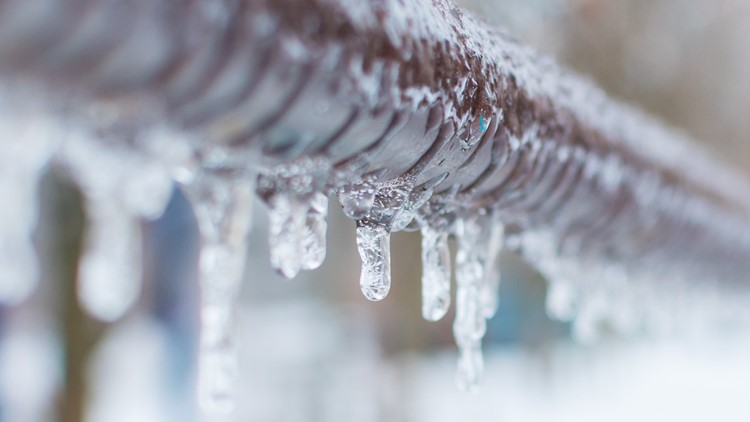Advice for Preventing Frozen Pipes in Cold Weather: Professional Advice
Advice for Preventing Frozen Pipes in Cold Weather: Professional Advice
Blog Article
Are you currently in search of selective information around How To Avoid Freezing Pipes?

Cold weather can wreak havoc on your plumbing, particularly by freezing pipes. Here's how to prevent it from happening and what to do if it does.
Intro
As temperature levels decrease, the danger of frozen pipelines rises, potentially resulting in expensive repair services and water damages. Comprehending how to stop icy pipes is crucial for home owners in chilly climates.
Comprehending Frozen Pipes
What causes pipelines to ice up?
Pipelines ice up when exposed to temperature levels below 32 ° F (0 ° C) for expanded durations. As water inside the pipelines freezes, it expands, taxing the pipe walls and possibly causing them to rupture.
Threats and problems
Frozen pipes can bring about supply of water disturbances, residential property damage, and expensive repair services. Ruptured pipelines can flood homes and cause considerable architectural damage.
Signs of Frozen Pipeline
Determining frozen pipes early can avoid them from rupturing.
Exactly how to determine icy pipelines
Seek lowered water circulation from taps, uncommon odors or sounds from pipes, and visible frost on subjected pipelines.
Avoidance Tips
Protecting prone pipes
Wrap pipes in insulation sleeves or make use of warm tape to shield them from freezing temperatures. Concentrate on pipelines in unheated or outside areas of the home.
Heating strategies
Maintain interior rooms appropriately warmed, particularly locations with pipes. Open closet doors to allow cozy air to distribute around pipelines under sinks.
Securing Outdoor Pipes
Garden hoses and outside taps
Detach and drain pipes garden pipes before wintertime. Install frost-proof faucets or cover outdoor taps with shielded caps.
What to Do If Your Pipelines Freeze
Immediate activities to take
If you suspect frozen pipelines, keep taps available to relieve pressure as the ice thaws. Use a hairdryer or towels taken in hot water to thaw pipes slowly.
Long-Term Solutions
Structural modifications
Take into consideration rerouting pipes far from exterior walls or unheated areas. Include extra insulation to attic rooms, basements, and crawl spaces.
Updating insulation
Invest in premium insulation for pipes, attics, and walls. Correct insulation aids preserve consistent temperatures and minimizes the threat of icy pipelines.
Final thought
Stopping frozen pipes needs aggressive steps and fast feedbacks. By comprehending the causes, indications, and safety nets, home owners can shield their pipes throughout winter.
6 Proven Ways to Prevent Frozen Pipes and Protect Your Home
Disconnect and Drain Garden Hoses
Before winter arrives, start by disconnecting your garden hoses and draining any remaining water. Close the shut-off valves that supply outdoor hose bibs and leave the outdoor faucet open to allow any residual water to drain. For extra protection, consider using faucet covers throughout the colder months. It’s also important to drain water from any sprinkler supply lines following the manufacturer’s directions.
Insulate Exposed Pipes
Insulating your pipes is an effective way to prevent freezing. Pipe insulation is readily available at home improvement stores and is relatively inexpensive. Pay close attention to pipes in unheated areas such as the attic, basement, crawl spaces, or garage. Apply foam insulation generously to create a buffer against the cold. You can also wrap your pipes in heat tape or thermostat-controlled heat cables for added warmth.
Seal Air Leaks
Inspect your home for any cracks or openings that could let in cold air. Seal any holes around the piping in interior or exterior walls, as well as the sill plates where your home rests on its foundation. Additionally, make sure to keep your garage door closed unless you’re entering or exiting. Leaving it open creates a significant air leak that can lead to frozen pipes.
Allow Warm Air Circulation
During cold snaps, it’s essential to allow warm air to circulate evenly throughout your home. Leave interior doors ajar to promote better airflow. Open kitchen and bathroom cabinets to help distribute heat consistently around the rooms. If you have small children or pets, be sure to remove any household chemicals or potentially harmful cleaners from open cabinets for safety.
Let Faucets Drip
A small trickle of water can make a big difference in preventing ice formation inside your pipes. When temperatures drop significantly, start a drip of water from all faucets served by exposed pipes. This continuous flow helps prevent the water from freezing. Additionally, running a few faucets slightly can relieve pressure inside the pipes, reducing the chances of a rupture if the water inside does freeze.
https://choateshvac.com/6-proven-ways-to-prevent-frozen-pipes-and-protect-your-home/

Do you appreciate reading up on How To Avoid Freezing Pipes? Write feedback directly below. We would be glad to know your reactions about this post. We are looking forward that you come back again soon. Appreciated our piece of writing? Please quickly share it. Help others locate it. We truly appreciate your readership.
Start Now Report this page